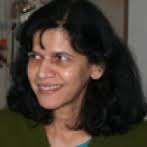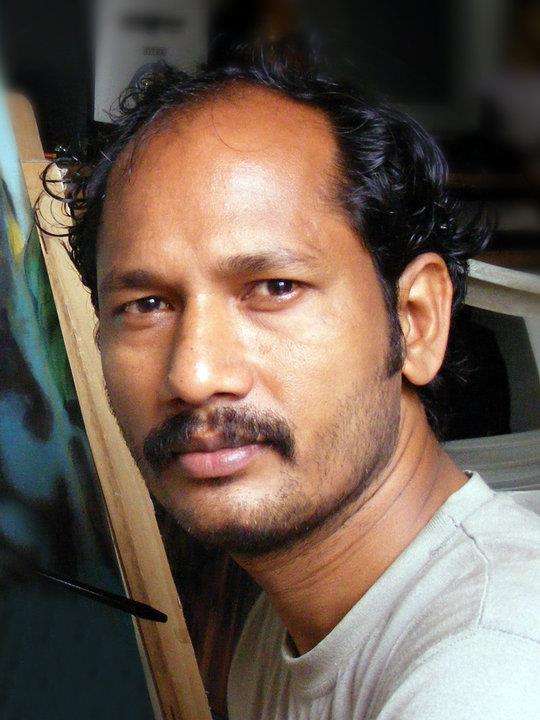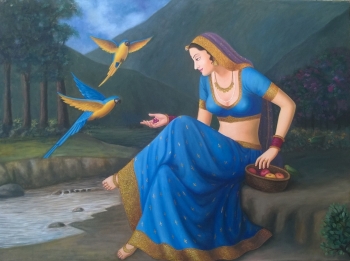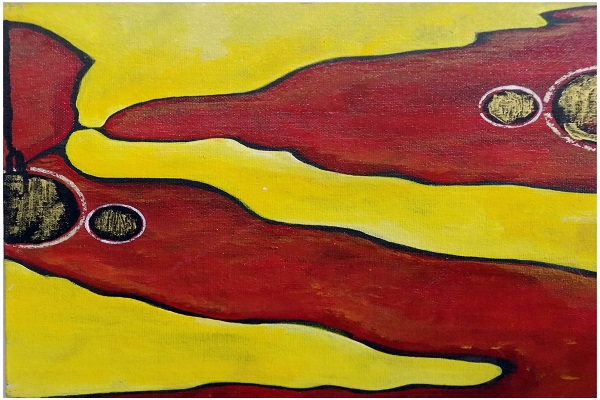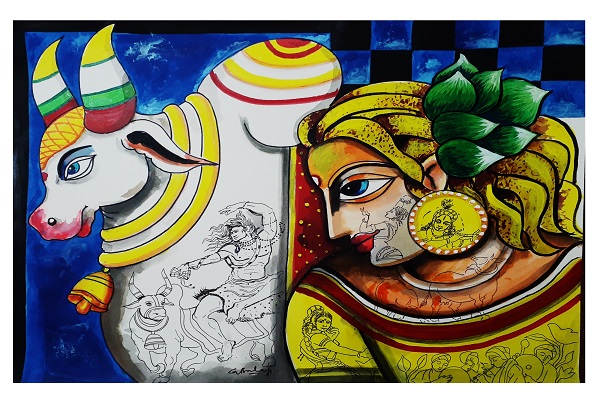
Colors dancing on an empty canvas, strokes that seem to defy gravity, and an unrestrained expression of emotions – abstract paintings beckon us into a realm where artistic freedom takes center stage. As Wassily Kandinsky once mused, 'Color is the keyboard, the eyes are the harmonies, the soul is the piano with many strings.' In our venture into the world of abstract paintings, we intricately navigate the potent realm of artistic freedom, unraveling the delicate threads that intricately weave this captivating tapestry of self-expression. Come along as we embark on a voyage through the unexplored territories of abstract art, where each brushstroke narrates a unique story, and every hue articulates a language all its own. Are you ready to unlock the secrets behind the canvas?
Abstract Paintings Revolution
In the vast tapestry of art history, a revolution unfolded—a paradigm shift that transcended the boundaries of tradition and ushered in a new era of creative liberation. Abstract art emerged as the vanguard of this movement. It challenges preconceived notions and beckons artists to explore uncharted territories.
Historical Context
The inception of abstract art dates back to the initial decades of the 20th century. It was a time when artists sought to break free from the constraints of representation. As the world underwent profound societal changes, so too did the art scene. The conventional became a playground for the unconventional. Artists dared to experiment with form, color, and expression in ways never seen before.
Pioneers of Abstract Expressionism
Central to the evolution of abstract art were the pioneers of abstract expressionism. It was a movement that celebrated the spontaneous and the subconscious. Visionaries like Wassily Kandinsky, known for his expressive use of color, and Kazimir Malevich, a trailblazer in geometric abstraction, paved the way for a radical departure from artistic conventions. These artists envisioned a new language—one that transcended the literal and delved into the visceral.
The Shift from Traditional to Abstract
The transition from traditional to abstract marked a seismic shift in the artistic landscape. Where once realism and representation held sway, artists now sought to convey emotions, concepts, and experiences through non-representational forms. The canvas, once a mirror reflecting the tangible world, transformed into a space for the intangible—an arena for the artist's innermost thoughts and emotions to unfold.
This revolution was not merely a departure from tradition; it was a bold assertion of artistic freedom. Abstract art transformed into a conduit for individual expression, serving as a medium for artists to convey the indescribable. As we navigate through this evolution of artistry, we observe the inception of a movement that persists in influencing our perspectives and cultivating a deeper appreciation for art—an everlasting testament to the force of creative emancipation.
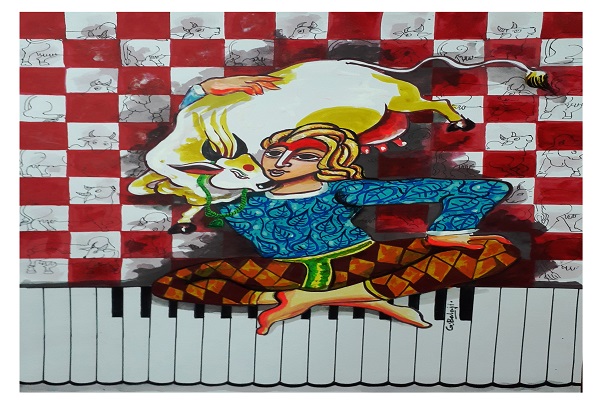
The Essence of Artistic Freedom in Abstract Paintings
Art, at its core, is a celebration of freedom, and nowhere is this more apparent than in the mesmerizing world of abstract paintings. Let's unravel the intricate layers that define the essence of artistic freedom in abstract art.
Defying Conventions: Breaking Free from Realism
Abstract paintings boldly stand as a rebellion against the constraints of realism. Here, artists liberate themselves from the shackles of depicting the tangible world. Thus allowing their creativity to transcend the boundaries of convention. The canvas becomes a playground where imagination knows no limits, and the brush becomes a tool for defiance. As we delve into this defiance, we witness the birth of a unique visual language that speaks volumes without being confined to the familiar shapes and forms of the tangible realm.
Embracing Subjectivity
At the heart of abstract art lies the profound connection between the artist and their work. Every stroke, every swirl of color, is a testament to the artist's personal expression. Unlike the objective gaze of realism, abstract paintings invite us into the subjective realm of the artist's emotions and experiences. It's a journey into the depths of the creator's psyche, where the canvas becomes a mirror reflecting the nuanced shades of their inner world. In this embrace of subjectivity, we witness the raw authenticity that defines abstract art, making each piece a unique fingerprint of the artist's soul.
Symbolism and Interpretation
Abstract paintings are a canvas of ambiguity, inviting viewers to interpret and find personal meaning in the kaleidoscope of forms. Symbolism becomes a powerful tool, with shapes and colors transcending their literal existence. Each element holds the potential for diverse interpretations, creating a dynamic dialogue between the artist and the observer. As we navigate this symbolic landscape, we realize that the true beauty of abstract art lies not just in what is seen but in the stories woven by individual perceptions. It's an exploration of meaning where the artist's intention merges with the viewer's imagination, giving rise to a rich tapestry of subjective interpretations.
Interesting Blog: The Fluidity of Forms in Abstract Art Paintings
Deciphering the Language of Colors in Abstract Paintings
In the vast and vibrant universe of abstract paintings, colors emerge as the unsung poets. It weaves tales of emotion that resonate beyond the strokes of the artist's brush.
Understanding the Emotional Impact
Colors are not merely pigments on canvas. They are conduits of emotion, evoking a spectrum of feelings that words often struggle to express. Take, for instance, the ethereal blues in Picasso's "The Weeping Woman" or the fiery reds in Rothko's "No. 5/No. 22". Each hue carries its own emotional weight, inviting viewers into a dialogue with the artwork. From the calm serenity of cool tones to the passionate intensity of warm hues, the emotional impact of colors is a nuanced language waiting to be deciphered.
Renowned Abstract Artists and Color Symbolism
The masters of abstract art have, throughout history, wielded colors with intention and purpose. Kandinsky hailed as the pioneer of abstract expressionism, assigning spiritual significance to colors. His use of vibrant yellows symbolized joy, while deep blues conveyed a sense of spirituality. Moving forward, the abstract expressionist Mark Rothko employed expansive fields of color to elicit profound emotional responses. His deliberate choices aimed to transcend the visual and resonate with the viewer on a visceral level. Through these artists and many more, we witness a rich tapestry of color symbolism, each stroke laden with meaning.
Colors as Narrative Contributors
In the abstract realm, every color contributes to the unfolding narrative of the artwork. It's a language where the absence of traditional forms heightens the significance of color choices. Consider the enigmatic use of black in Franz Kline's "Untitled" – a color that speaks volumes without uttering a word. Colors, in their juxtapositions and contrasts, guide the viewer through the artist's intended journey. They set the tone, establish rhythm, and create a visual melody that resonates with the observer's emotions.
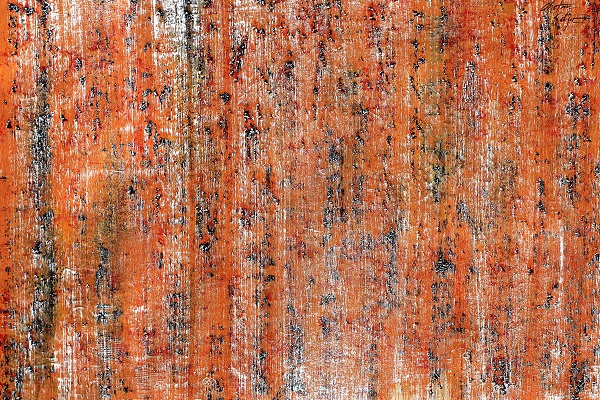
Abstract Art in Modern Society
In the kaleidoscope of contemporary culture, abstract art emerges as a dynamic force. It transcends traditional boundaries and makes its mark on the cultural landscape. No longer confined to the hallowed walls of galleries, abstract art has seamlessly woven itself into the fabric of modern society. It has become a powerful reflection of our collective aesthetic evolution.
The Role of Abstract Art in Contemporary Culture
Abstract art serves as a visual dialogue, transcending linguistic barriers to communicate on a universal level. Today, where diverse voices clamor for attention, abstract art offers a unique space for introspection and interpretation. It becomes a mirror reflecting the complexities of our ever-evolving culture, sparking conversations about identity, diversity, and the human experience.
Abstract Art in Public Spaces
The streets themselves have become canvases, and abstract art spills beyond the confines of studios. Murals, once relegated to urban decay, now breathe life into cityscapes. Massive installations challenge spatial norms, transforming public spaces into immersive galleries. Abstract exhibitions draw crowds, inviting individuals to interact with art in unexpected places. These public manifestations not only democratize art but also redefine our relationship with the environment, turning everyday spaces into platforms for creative expression.
Social Media's Impact on Accessibility and Popularity
Enter the virtual realm, where social media acts as a powerful catalyst for the democratization of art. Abstract paintings, once viewed as esoteric, find themselves shared, liked, and discussed across digital platforms. Instagram, Pinterest, and TikTok have become virtual galleries where artists showcase their work to a global audience. This digital accessibility not only broadens the reach of abstract art but also fosters a vibrant online community of enthusiasts, critics, and creators. Artists can now also sell art online.
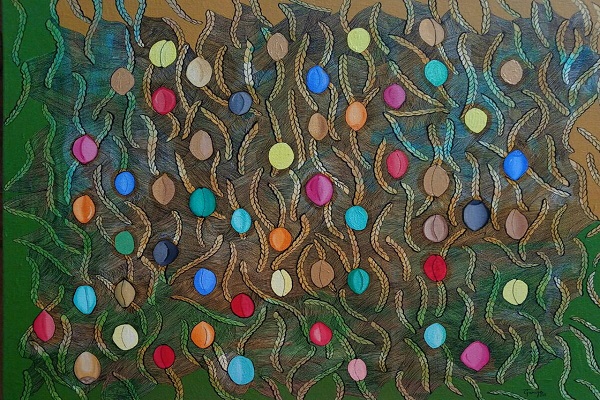
Read More: Impact of Abstract Art Paintings from Pixels to Emotions
Wrapping Up
Artistic freedom, epitomized by abstract paintings, is not merely a historical phenomenon. It's a living force that continues to shape our cultural landscape. In the kaleidoscope of contemporary culture, abstract art serves as a dynamic dialogue, sparking conversations about identity, diversity, and the human experience. Its presence in public spaces and the digital realm amplifies its accessibility, turning it into a shared experience that transcends physical boundaries.
At Indian Art Ideas, we understand the transformative power of artistic expression. Explore our portfolio of artistic paintings that resonate with the spirit of creativity and innovation. You can also sell art online with us.
FAQs
What is abstract in painting?
Abstract in painting refers to a style that departs from realistic representation. It utilizes non-representational forms, colors, and gestures to convey emotions and concepts.
What is the idea behind abstract painting?
The idea behind abstract painting is to liberate artists from the constraints of depicting recognizable objects. It encourages a focus on emotional expression, symbolism, and the unique language of color and form.
Who is the father of abstract art?
Wassily Kandinsky is often regarded as the father of abstract art. He pioneered the movement with his groundbreaking explorations into non-representational painting in the early 20th century.













